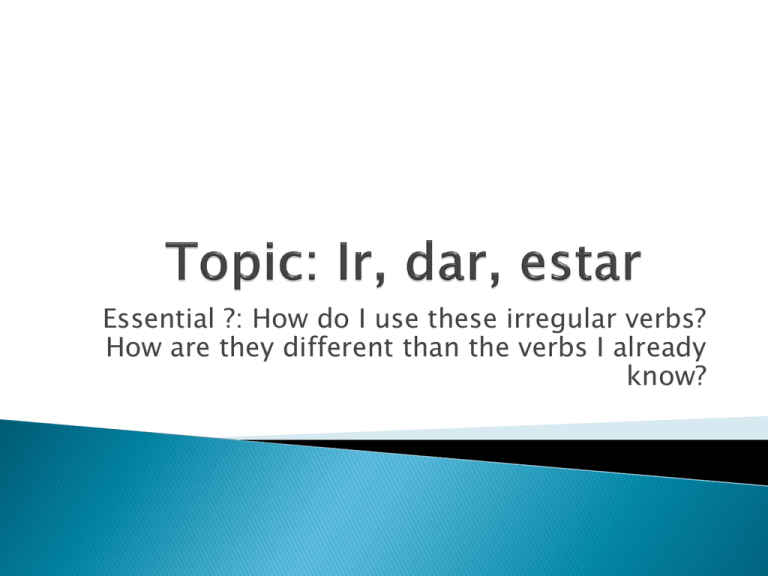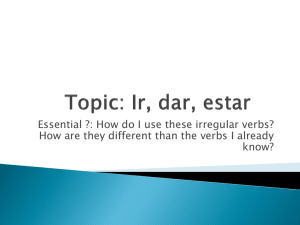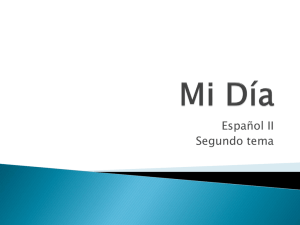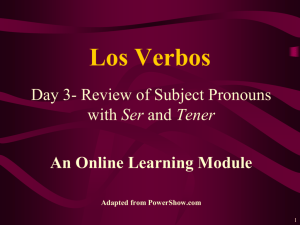ir, dar, estar lesson
advertisement

Essential ?: How do I use these irregular verbs? How are they different than the verbs I already know? You have learned to conjugate regular –ar verbs…the verbs that follow rules. There are verbs that don’t always follow the rules. Dar, estar and ir are some examples What is conjugating? When do you conjugate? How do you do it? Give an example. Dar = “to give” Yo DOY (this is the irregular part) Tú das Él/Ella/Ud. da Nosotros damos Ellos/ellas/Uds. dan It is only irregular in the “yo” form. It means “to be”, but for where you are and how you feel….not to describe someone’s looks or personality Watch the accents! Yo estoy Tú estás Él/ella/Ud. está Nosotros estamos Ellos/ellas/Uds. están ¿Cómo estás/está? ¿Dónde está _______? ◦How are you?◦¿Where is ______? Ir = “to go” Irregular in ALL forms Yo voy Tú vas Él/ella/Ud. va Nosotros vamos Ellos van ¿Adónde vas/va? ◦Where are you going? ¿Cómo vas/va a ______? ◦How do you go/get to ______? You always need “a” after using ir to state where you are going. The word “a” is funny in Spanish ◦ Sometimes it means “to” ◦ Sometimes it means “at” (only for time) ◦ Other times it has no meaning Anytime a person is the object of the sentence, you have to have “a” ◦ Notice the difference. Escucho música. Escucho a Sra. Gamboa. If you are going to use “a” and the next word is “el”, combine them into “al” ◦Escucho a la profesora ◦Escucho AL profesor. Write a sentence using Ir, Dar and Estar along with a picture that correlates to the sentence. You have to use the sentences in a different form for each one. I give my friend a backpack. They are happy. We go to school in the morning.



